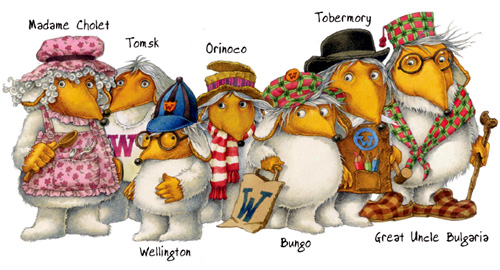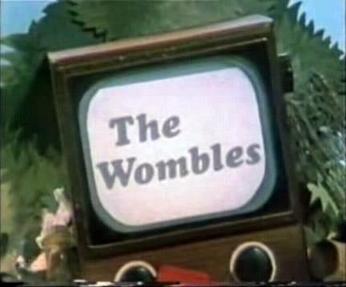One of
FilmFair Production's most iconic programmes, brought to life by
Ivor Wood and his team, are
the Wombles. Small, furry-like creatures who make the use of "
things that the everyday folks leave behind"
on their home at Wimbledon Common, London - without even trying, they
helped to spread the importance of Recycling with fun characters and
creative stories.
The original series aired in 1975 with voices provided by the versatile and enthusiastic
Bernard Cribbens (
Edward & Friends, Moschops) and have since spanned
several memorable Albums - by composer / singer
Mike Batt
-
a live-action film and a new series in 1997.
As of 2010, the original books have been reprinted by
Bloomsbury Publishing for new
generations to enjoy. Not bad, eh? =)
 |
| How the Wombles originally looked in 1968! |
Before television, however,
The Wombles originally started out in a 1968 novel, written by Paris-born
Elisabeth Beresford. She moved to London to start a family and, while working near Wandsworth Common, got the idea which would become her most famous creations. In fact,
Orinoco was based off her own son
Marcus…!
Elizabeth went on to write six novels in all, and having read the first out of sheer curiosity, I was very surprised to find major differences between the 13 stories in print and the 30-odd episodes of the original BBC series:
- The novels are clearly aimed at a slightly older series, 10 to 12 years, with more depth in storytelling and humour than the TV episodes.
- The first story begins with Bungo, the "star" of the novel, as he picks himself a name (like every good Womble, from Great-Uncle Bulgaria's map of the world) and then explores the Common with new friends Orinoco, Wellington and Tomsk while tidying up litter. It's through his curious nature that he has a run-in with a Dalmatian, helps mend the burrow with some ready-made concrete (discreetly paid for as Wombles never steal) and then bravely goes after Orinoco when he runs away from home.
- The characters themselves are a fair bit cheekier to one another - and at times rather blunt, especially towards Tomsk for his stupidity (before he eventually gains their respect in an emergency), while Great-Uncle Bulgaria dished out a clout on the head or an aside remark here and there ("Bungo indeed - silly sort of name!").
- There are also characters who weren't brought into the television series - such as Cousin Yellowstone, who helps Bungo find Orinoco in London - while Alderney and Shansi wouldn't appear until the 1997 series (although they were still present for the tie-in annuals and original books).
- Like many novels there is a on-going storyline throughout - as the Wombles first have their burrow flooded and then caught in a heavy snowfall with a food shortage to boot. But all comes right in the end after the thaw when they head out for their annual Midsummer Night Party at Battersea Park.
- And unlike the TV Series, the Wombles encounter with humans a fair bit more in the books. In fact, Great-Uncle Bulgaria shows his kinder side when he invites a lonely old gentleman, Mr. D. Smith, to their Womble Christmas Party…
And all this from one novel so far! The Wombles of Wimbledon Common have a great many more adventures in the remaining books as they travel the world, encounter
Water-Wombles and eventually return home to their old burrow...
One wonders why they opted to revise the stories for a slightly younger audience when brought to television - not that anyone's complaining, heavens above! For me, when reading the books for the first time, it was more compelling to compare / recognise the differences and changes that were made. Even you would be amazed at how different the original story of "
Orinoco and the Black Umbrella" differs to the version that was televised...
All in all, it is safe to say that I now find the Wombles delightful with either format. They're still fondly remember 40+ years later, whether for their music, the TV episodes or the original books, and show no signs of being forgotten about. The books are indeed worth your money if you're curious to view the original TV stories in a "new" (or should that be "old"?) light.
 |
| A slight update for 2010 - illustrated by Nick Price |
LINKS OF INTEREST:
Womble Stories - download a selection of audio stories from AudioGo.com







